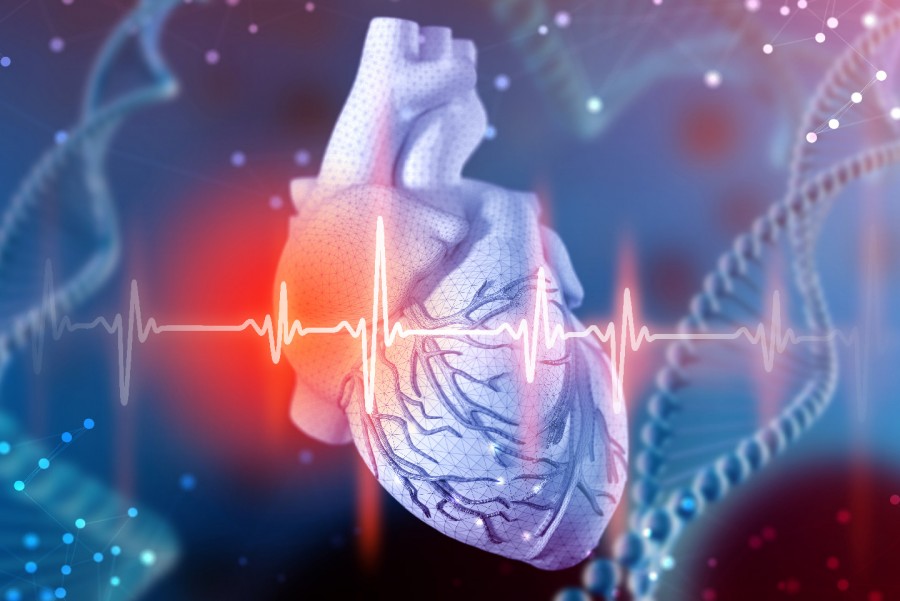News and Article
Understanding the risk of heart rhythm disorders (arrhythmia)

Disorders of heart rhythm in a person tends to increase the risk with age, even though the person does not show clear signs of coronary heart disease.
Heart muscle damage - as a result of a heart attack - is the most important factor that causes a person suffering from heart rhythm disorders (arrhythmia). Scarring or residual tissue damaged by a heart attack can cause:
- Low heart rate due to disruption of the heart's electricity sources or disruption of electrical conductivity.
- It can also cause an increase heart rate, due to excessive electrical discharge.
- or it can also form new electrical trigger points in the atriums or ventricles that will spread electricity abnormally.
In a patient with heart disease, the cardiologist will check the heart rhythm by doing electrocardiogram (ECG) on a regular basis. However, arrhythmias sometimes may not be monitored or detected. In addition, not all arrhythmias cause symptoms that can be detected, therefore make sure you convey all symptoms that you experienced such as syncope, difficulty breathing, feeling tired, or falling due to weakness, palpitation in the chest.
Some congenital conditions can make a person prone to arrhythmia. For example, not complete or perfect developed the heart's electrical conduction system can cause chronic heart's electrical conduction barriers and chronic low heart beat. People born with extra cardiac electrical pathways, tend to develop high heart rates such as supraventricular tachycardia.
In addition, many chemicals such as potassium, magnesium and calcium in high or low concentrations in blood or tissues can cause arrhythmias which sometimes make a serious problems. Even though these substances have an important role in generating and delivering normal electricity in the heart. Also addictive ingredients, especially alcohol, cigarettes, narcotics can trigger arrhythmia as caused by heart medications. Instead drugs used to treat arrhythmias can cause other arrhythmias.
There are several types of arrhythmias including atrial fibrillation and ventricular fibrillation.
Atrial Fibrillation
Atrial fibrillation can occur in patients with heart failure or on people who have had heart attacks. Also can occur in people with heart valve disorders, inflammation of the heart muscle or heart lining, or in people who have just had heart surgery. Atrial fibrillation also often occurs in people with hypertension or diabetes mellitus. Sometimes associated with congenital heart abnormalities.
Problems with the lungs can also affect the heart. Therefore atrial fibrillation often occurs in people suffering from chronic pulmonary disease, pulmonary embolism, pulmonary emphysema and asthma. Other factors that influence the risk of atrial fibrillation are: thyroid gland disorders, excessive alcohol consumption and smoking or using stimulant drugs including coffee.
Sex and age also influence the chances of atrial fibrillation including its severity. Men are slightly more likely to develop atrial fibrillation than women, but women diagnosed with atrial fibrillation have a longer term risk of early death. Older people are less likely to develop atrial fibrillation than young people.
Ventricle Fibrillation
Ventricle Fibrillation is a type of arrhythmia that is more dangerous than atrial fibrillation. Caused by electrical disruption in the muscles of the ventricles, so that blood flow throughout the body is stopped including to the coronary arteries. As a result the heart has a lack of oxygen and makes the heart beat abnormal. So that a heart attack or sudden cardiac arrest can occur if this condition is not treated immediately.
If you experience heart palpitations and pulse or heart rate faster and irregular then immediately visit the doctor to ascertain yourself. Having only arrhythmias increase the risk of heart attack, sudden cardiac arrest, and stroke. Work with your doctor closely and follow the instructions to control risk factors.
How to control the risk factors:
- Treat high blood pressure
- Control of cholesterol (total cholesterol, LDL, HDL and Triglycerides)
- Achieve ideal body weight
- Stop smoking and all kinds of tobacco
- Regular physical activity
- Stop alcohol
This paper cannot replace the role or advice of health workers. All the decisions you make must be discussed with your healthcare provider, regarding your specific medical needs.
Writer: Alex Pattinasarany
Reference:
- Understand Your Risk for Arrhythmia, American Heart Association, 2016, 2020, https://www.heart.org/en/health-topics/arrhythmia/understand-your-risk-for-arrhythmia
- Ventricular Fibrillation, Mayoclinic, 2020, 2020, https://www.mayoclinic.org/disease-conditions/ventricular-fibrillation/symptoms-causes/syc-20364523?p=1
